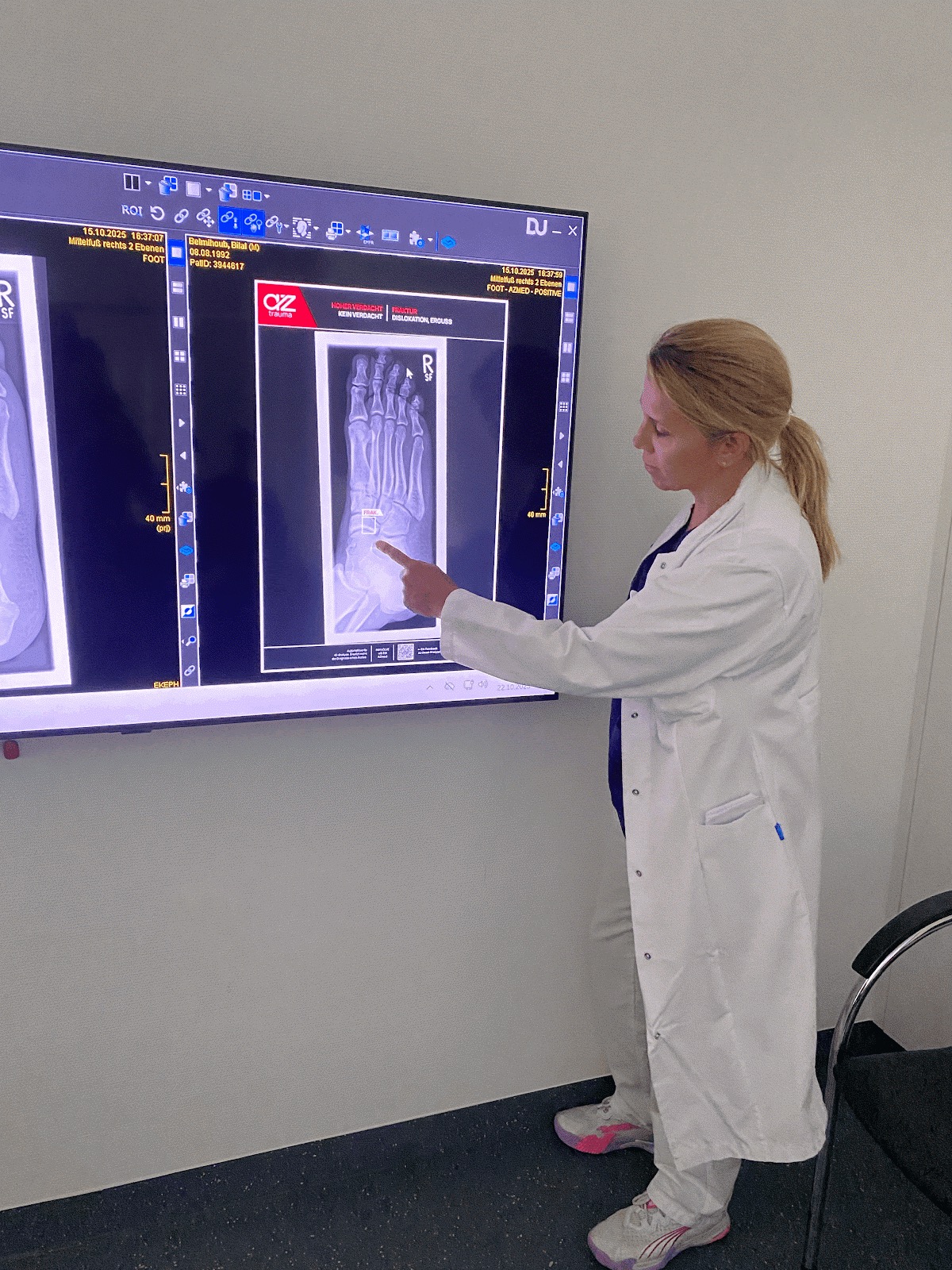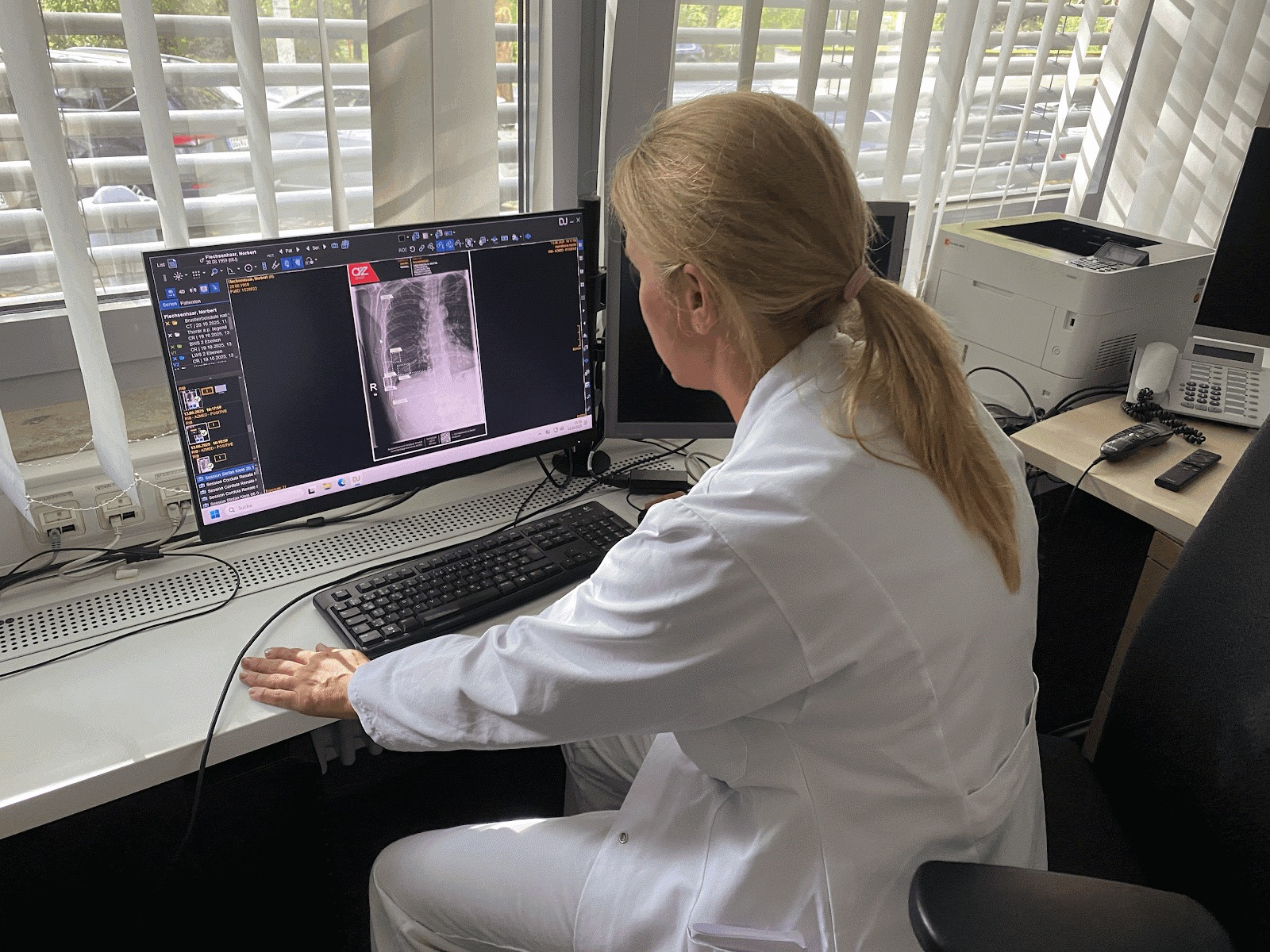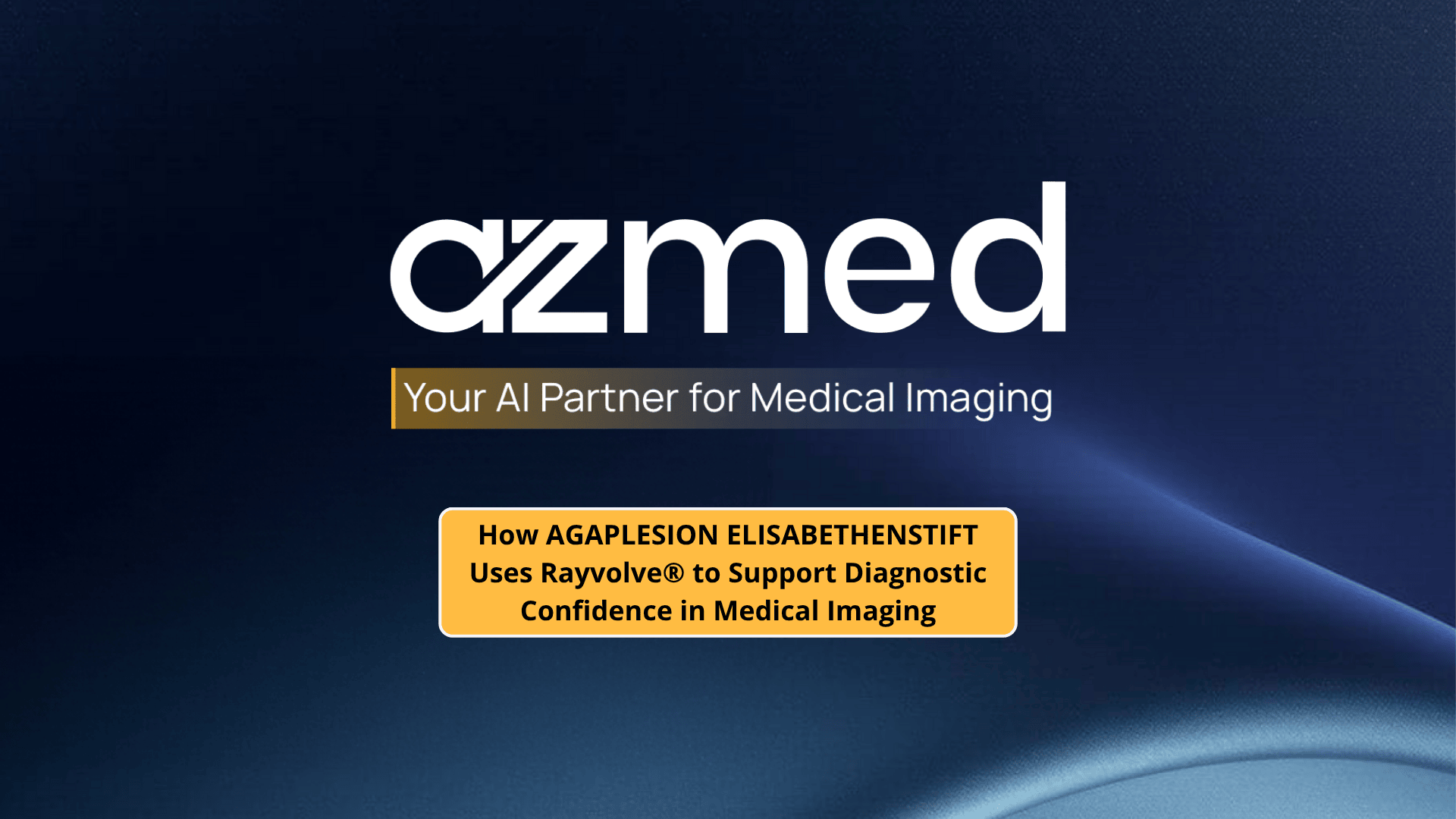Artificial intelligence (AI) in radiology has transitioned dramatically from the pilot phase to a scaling clinical deployment phase. It is certainly in response to the ever-increasing gap between imaging volume and reporting capacity. The volume of radiology examinations has increased by more than 30% in some countries in the past 10 years, while workforce shortages affecting both clinicians and radiologists have persisted over the same timeframe.¹ ² ³
The shortage is most pronounced in acute care and trauma services. Peer-reviewed studies have estimated that interpretive errors occur in around 3–5% of all image interpretations, and fractures are cited as some of the most frequently missed.⁴ Meanwhile, radiologist occupational burnout is likely affecting up to 88% of radiologists worldwide.⁵ This is in response to long and demanding PACS/RIS worklists and the need to make immediate clinical adjudications regarding time-sensitive diagnoses.⁶
In the context of this evolving clinical landscape, AI is showing the potential to be a new clinical decision support (CDS) tool to engage with, to assist clinicians by enabling more reproducible detection, and to introduce actionable imaging findings in a timely manner through expedited reporting and assigning imaging priority.⁷ ⁸
One of the reference centers in Germany adopting digital health technologies is AGAPLESION ELISABETHENSTIFT, which uses the Rayvolve® AI Suite developed by AZmed (Paris, France) to improve the detection of fractures, chest abnormalities, and support standard radiology workflows with AI.⁹
A Partnership Rooted in Clinical Need
At AGAPLESION ELISABETHENSTIFT, the AI deployment occurred not because of curiosity but because of a need for an additional layer of oversight for supervising the patient throughput. The number of specialists varies. The senior consultant in the surgical outpatient department of trauma surgery, orthopedics, and sports medicine, Dr. Sabine Geck, shared this comment: “We perform imaging day and night, but a radiologist is not always available 24 hours a day to interpret the studies”.
To optimize diagnostic performance, the organization implemented AZtrauma and AZchest, from the Rayvolve® AI Suite, in March 2025. AZtrauma, which achieved the highest AUC for fracture detection in the independent Luiken et al. (2025) study, and regarded as the top-performing AI solution in the global markets, can infer on radiographs within seconds for possible fractures, dislocations, and joint effusions. “Here, we see a nondisplaced fracture in the midfoot region” Dr. Geck notes, pointing to a flagged ROI on the radiograph. “The fracture is not displaced, so it is hardly visible. But the AI has detected a fracture here with high probability”.

She adds: “AZchest can also identify fluid in tissue or joints, such as effusions or infiltrates. The AI also detects and marks a pneumothorax – a collapse of the lung”.
Seamless Integration into Clinical Workflow
A key factor contributing to AGAPLESION’s success with AI is the design of the workflow. The Rayvolve® AI Suite is natively integrated with PACS. Once the X-ray is acquired, the image is automatically sent to the Rayvolve® AI Suite as a pseudonymized study, with no extra clicks. The software then performs inference on the radiograph, assessing the X-ray image. The system sends the results back to the user within seconds, which includes a bounding box around the abnormality and an annotation indicating the suspected finding.
“The AI examines radiographs and gives us an assessment of whether a fracture could be present or not,” explains Dr. Geck. “The system has recently started estimating whether a fracture is old or not – this is particularly helpful in the area of the spine”. This type of integration removes the necessity for separate applications or manual interventions. For example, radiologists and trauma physicians can view the output of the AI in conjunction with the original radiograph, facilitating a faster interpretation where they maintain complete control of the diagnostic process.
Empowering Clinicians Through Decision Support
The Rayvolve® AI Suite has had a particularly pronounced impact on residents and trainees. In an emergency context, residents frequently perform preliminary interpretations before the radiologist gets a chance to review the case. In that particular context, AZtrauma and AZchest, as additional readers, offer a sense of reassurance, consistency, and a safety net against potential oversights.
“Less experienced doctors are supported in their decision – especially when, for example, at night or on weekends, no radiologist is on duty,” says Dr. Geck.
Every radiograph that the system processes has a quality-assurance mechanism that encourages collaboration between human intelligence and artificial intelligence. Each AI-rated radiograph is attached to a QR code that allows clinicians to provide feedback, principally in instances where the AI doesn’t match their own assessment. According to Juliette Denieuil, the AZmed Coordinator for the DACH region, it is a vital aspect of continuous quality improvement: “There, physicians can give feedback directly, especially when they consider results to be false positives or false negatives.”
These closed-loop feedback mechanisms exemplify AZmed’s philosophy of human-centered AI products designed to support, not replace, physician’s judgment.
From Subtle Findings to Safer Diagnoses
In daily clinical practice, hairline fractures are some of the hardest findings to identify. The presence of these subtle fractures is easy to miss, especially in a busy trauma department, where hundreds of studies are reviewed every shift. AI’s ability to identify and highlight these findings early enables more consistent detection and will accelerate decisions into action.

“The fracture here was nondisplaced and thus barely perceptible,” recalls Dr. Geck. “But the AI solution by AZmed marked the area with a red box, suggesting a high likelihood of a fracture. That allowed us to confirm the finding and initiate the correct diagnostic pathway without delay.”
AI acts as a continuous safety net to decrease diagnostic uncertainty, achieve faster turnaround time (TAT), and provide more overall confidence in clinical decision-making.
Responsible Use of AI in Radiology
Although AI is a helpful addition for clinicians, it should never be viewed as a substitute for human judgment. Clara Einhaus, AI Officer at AGAPLESION, speaks about the importance of ensuring this balance: “AI applications like Rayvolve® are designed to support medical staff in their daily work. However, decisions are always made by our experts, in this case, by the medical service. The interplay between artificial and human intelligence ensures that patients receive the best possible treatment according to modern standards”.
Developing AI with this ethical framing is crucial to ensuring trust throughout the patient and provider journeys. Clinicians and patients want to know that artificial intelligence is only an assistant and that clinical decision-making retains clinicians’ autonomy.
An underlying commitment to this balance is AZmed’s approach to development. Each Rayvolve® AI Suite deployment is engineered to support a high-throughput workflow within existing systems. The company wants to ensure that AI is an extension of the clinician’s workflow rather than a disruption.
Scaling AI Across the AGAPLESION Network
Observing this success at the Darmstadt site, AGAPLESION is now considering a broader implementation of the Rayvolve® AI Suite at its facilities. Fabian Lechner, Head of Central AI Services at AGAPLESION, describes this as part of a deliberate innovation strategy: “We know that AI can offer added value in a wide variety of processes, which is why we are testing and evaluating a wide range of applications in small areas. AZmed is an example of an innovative, modern decision support system for diagnostics and the resulting treatment. My thanks go to Dr. Geck and her colleagues, who have introduced AZmed so successfully at AGAPLESION ELISABETHENSTIFT.”
This method closely follows the organization’s long-term vision, which is to effectively combine digital innovation with patient-centered care. This provides AGAPLESION with systematic evaluations of performance, safety, and usability, and in turn, AGAPLESION requires every AI solution adopted to provide measurable clinical benefits.
AI Adoption Beyond Darmstadt
There has been a growing movement toward the adoption of radiology AI technology in Germany. Hospitals and private imaging facilities have started introducing CE-marked tools into their workflows for fracture detection, chest analysis, bone-age assessments, and also osteo-articular measurements. The Rayvolve® AI Suite, for example, is actively being deployed across clinical sites globally and is used by imaging teams to help manage rising imaging volumes while preserving diagnostic accuracy.
The experience at AGAPLESION was consistent with a broader theme: the most fruitful AI adoptions are those that arise from the clinical base, with management's support and through an engaged partnership with AI professionals. AI does not operate as a separate piece of technology; it becomes a vital collaborative tool in a diagnostic ecosystem, shaped partly by clinical determinations and partly by AI-assisted image analysis.
Towards a New Standard of Care
The incorporation of AI into everyday radiology practice represents a true shift in healthcare provision. AI allows physicians to provide diagnoses that are faster, safer, and more consistent by recognizing subtle findings and aiding in the rapid review of studies.
At AGAPLESION, the Rayvolve® AI Suite is not just a technological device; it is a reliable partner to support clinical judgment.
As AGAPLESION advances its digital transformation strategy, its collaboration with AZmed demonstrates the responsible, evidence-based integration of AI in practice. Through the combination of validated technology and clinical expertise, a new standard is being set for how artificial intelligence can meaningfully contribute to healthcare delivery, supporting clinical staff day after day and moving the field of diagnostic medicine forward.
References
- Royal College of Radiologists. Clinical Radiology Workforce Census 2024 (published June 5, 2025). The Royal College of Radiologists
- OECD. Health at a Glance 2023. Diagnostic technologies: trends in use and availability. OECD
- Winder M, et al. Are We Overdoing It? Changes in Diagnostic Imaging Workload During 2010–2020 (single-center, decade-long trend; CT and US nearly doubled). PMC
- Brady AP. Error and discrepancy in radiology: inevitable or avoidable? Insights Imaging (2016/2017). Day-to-day error rate ≈3–5%; fractures commonly missed. PMC
- Fawzy NA, et al. Incidence and factors associated with burnout in radiologists: a systematic review (range 33–88%). J Am Coll Radiol (2023). PubMed
- Thakore NL, et al. Burnout Is More Than Binary (AJR 2024) — contemporary prevalence data in radiology. ajronline.org
- O’Neill TJ, et al. Active Reprioritization of the Reading Worklist Using AI Flags Reduces Wait and Turnaround Times. Radiology: AI (2020). pubs.rsna.org
- Batra K, et al. AI-driven worklist reprioritization reduces TAT and wait time for PE-positive CTPA (AJR 2023). ajronline.org
- AZmed news: “AZmed im AGAPLESION ELISABETHENSTIFT im Einsatz” (Oct 28, 2025) — deployment of Rayvolve® at AGAPLESION ELISABETHENSTIFT, Darmstadt. AZmed
Regulatory information
EU - Rayvolve: Medical Device Class IIa in Europe (CE 2797) in compliance with the Medical Device Regulation (2017/745). Rayvolve is a computer-aided diagnosis tool, intended to help radiologists and emergency physicians to detect and localize abnormalities on standard X-rays.
Caution: The data mentioned are sourced from internal documents, internal studies and literature reviews. This material with associated pictures is non-contractual. It is for distribution to Health Care Professionals only and should not be relied upon by any other persons. Testimonial reflects the opinion of Health Care Professionals, not the opinion of AZmed. Carefully read the instructions for use before use. Please refer to our Privacy policy on our website For more information, please contact contact@azmed.co.
US - Medical devices Class II according to the 510K clearances.
Rayvolve: is a computer-assisted detection and diagnosis (CAD) software device to assist radiologists and emergency physicians in detecting fractures during the review of radiographs of the musculoskeletal system. Rayvolve is indicated for adult and pediatric population (≥ 2 years).
Rayvolve PTX/PE: is a radiological computer-assisted triage and notification software that analyzes chest x-ray images of patients 18 years of age or older for the presence of pre-specified suspected critical findings (pleural effusion and/or pneumothorax). Rayvolve LN: is a computer-aided detection software device to assist radiologists to identify and mark regions in relation to suspected pulmonary nodules from 6 to 30mm size of patients of 18 years of age or older
AZmed 10 rue d’Uzès, 75002 Paris - www.azmed.co - RCS Laval B 841 673 601
© 2025 AZmed – All rights reserved. MM-25-53



